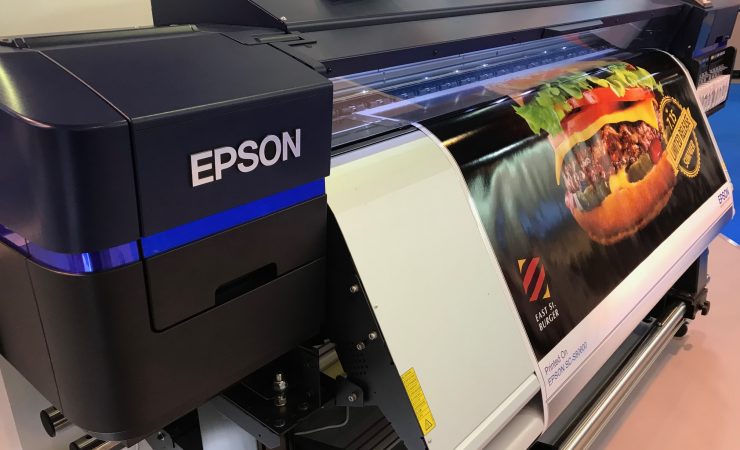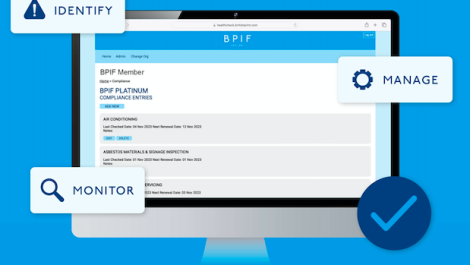UPDATED 11.16 Monday 21 February:
Industry representatives met virtually with BEIS on Friday 18 February to explain the extent of the problem the new legislation poses for the UK print industry. According to one ink manufacturer, an estimated £1 billion of work is produced annually in the UK using inks of the types understood to be affected, across all types of commercial and signage work and company sizes, from small specialist vehicle wrappers up to large production houses serving international brands. The cost – both in terms or ‘raw’ materials and of the necessary lab technology to process it – and difficulty of extracting GBL from inkjet inks were emphasised and contrasted with alternative methods based on other widely-available chemical products, which would be of the order of 10 – 20 times cheaper.
According to the IPIA’s Brendan Perring, the concept of the licensing approach is not disputed and is considered to be ‘fit for purpose’ but the timescale is not feasible. This will not be helped by the fact that it is estimated that something of the order of 50 times as many companies would need to apply for licences as had originally been envisaged in the Home Office’s impact assessment. Mr Perring told Digital Printer that it is hoped that a temporary extension to the 15 June 2022 implementation of the new law may be granted, in order to allow time for a ‘proper’ industry-wide consultation to be held. A preferred outcome would be that only manufacturers and suppliers of GBL or products which contain it would require licences, which would affect fewer than 100 UK businesses.
The next stage in the process is a further meeting between the industry, the BEIS specialist chemicals team and representatives of the Home Office. No date has yet been set for this but Mr Perring thought that it would be a matter of ‘weeks’. Meanwhile, the industry will work to coordinate its response via the IPIA, BPIF, ISA UK, Picon and others, starting at a meeting of the GPMA (Graphics and Print Media Alliance) this week, at which a joint letter to the Home Office and minister Kit Malthouse will be drafted and agreed.
/update
Legislation passed by the UK Government in December puts a new licensing requirement on anyone possessing, using or selling fluids containing gamma-butyrolactone (GBL), a chemical used in solvent and eco-solvent inks for wide-format and other types of print, with a compliance deadline of 15 June 2022. This will affect ink manufacturers, printer vendors, resellers and users of devices that contain these fluids.
The Statutory Instrument, The Misuse of Drugs (Amendment) (England, Wales and Scotland) Regulations 2021, was put before Parliament on 15 December 2021, and its consequences appear to have been notified via drugs regulation communications rather than via REACH, the EU regulation that controls hazardous materials and which has been replicated in the UK since Brexit.
The legislation is intended to tighten control of GBL and 1,4-BD (1,4-butanediol, a related drug), both of which convert in the body to GHB (gamma-hydroxybutyric acid), a powerful sedative connected with ‘date rape’ and other serious crimes and which is fatal in larger amounts. The key measure as far as the print industry is concerned is that it re-classifies GBL as a Class B controlled substance, which will from 15 June this year require a licence to import, export, produce, supply, offer to supply or possess for ‘legitimate industrial purposes’. GBL was previously a Class C substance and not subject to these restrictions.
Digital Printer understands that GBL is used as a stabiliser in solvent and eco-solvent inks used in printers supplied by vendors that include Epson, Mimaki, Mutoh and Roland DG. It is also possible that it is used in other ink types, which could include varieties developed for high-speed web inkjet presses. The substance is also used in industrial cleaning products and diabetic testing kits.
The necessary licence costs from £3133 per organisation, depending on its position in the supply chain (more for manufacturers and resellers), and imposes special handling and storage measures on users, including DBS checks on personnel with access to the inks. The application process is stated to take ‘up to 16 weeks’ according to the Home Office website, which means that anyone applying in time to meet the 15 June compliance deadline would need to be starting now.
Speaking to Digital Printer, Epson UK’s Pro Graphics sales manager Phil McMullin commented, ‘We heard from another manufacturer and are trying to get government confirmation; they haven’t written to us,’ though he noted that Epson’s UK ink manufacturing plant at Telford does not produce this type of ink. He also expressed the view that the government had assumed that this change would be of ‘no consequence’ to the printing industry, in which they were ‘absolutely wrong’.
The IPIA, which has been in communication with ink and printer manufacturers, will be meeting with BEIS (the Department for Business, Energy and Industrial Strategy), manufacturers and other industry representatives this Friday (18 February), in the hope of obtaining an extension to the deadline or an exemption for uses of GBL in print.
The Home Office’s Impact Assessment for the changed classification estimated that 65 UK companies would be affected. However, IPIA general manager Brendan Perring told Digital Printer that calculations by IPIA and ink and printer manufacturers, which take into into account units installed and market shares of different ink types (in which solvent is still dominant), suggested than some 3500 companies could be affected in the print sector alone.
Mr Perring added, ‘This issue was brought to the attention of the IPIA by the ink manufacturing sector, and it was immediately raised with the BEIS. There was a very quick response … and they have in turn raised it directly with the Home Office and their Chemicals Team. We have also secured a meeting on Friday with BEIS that will be attended by representatives of the ink manufacturing sector where we will explain in detail the impact that this legislation will have on our sector, put forward our analysis and request that an exemption be made for printing inks usage, or that a time-limited exception should be put in place as a minimum to allow manufacturers time to react and create alternative formulations and have these tested, approved and recirculated through the supply chain.’
The British Coatings Federation (BCF) has also been in contact with the Home Office and BEIS. CEO Tom Bowtell told Digital Printer, ‘While we support the aim of the [Government’s] proposal, we have concerns about the approach and timing of these changes. In discussion with officials at the Home Office we have requested an extension to the June 2022 deadline for obtaining a licence for use of GBL as a substance. Even if the licence regime is limited to companies handling neat GBL, we still believe the timelines are very challenging to obtain a licence in time.
‘In addition, we are aware that several printing ink companies would prefer to reformulate away from GBL, but there is insufficient time to do this before the June deadline. We have also called for users of mixtures (i.e. printers using printing inks) to be out of scope from the requirement to obtain a licence, given they do not buy or handle neat GBL. Once in a printing ink, the risk of misuse of GBL is unlikely given it would be extremely difficult to extract.’
UPDATE Thursday 17 February 2022:
Epson shared the following statement:
Epson is deeply concerned about the impact these measures could have not only to its own business, but on its customers and indeed the UK print signage industry as a whole. While we understand and support the Government’s desire to prevent the misuse of a potentially harmful substance, we believe it would be extremely difficult for GBL to be extracted from our ink due to its chemical formulation. We are convinced that the number of businesses and range of products likely to be impacted is far greater than the Government’s initial studies anticipate. We would welcome the opportunity to review with the Government a methodology to introduce licensing that would allow legitimate businesses to continue unimpeded, whilst minimising the potential risk of misuse.
We are already working closely with major industry associations including the IPIA, BPIF, ISAUK, The British Coatings Federation and Picon to highlight the disruption these measures will bring to businesses.
Digital Printer will report further on this story as it develops.


